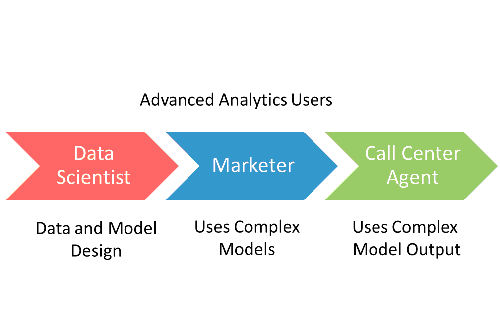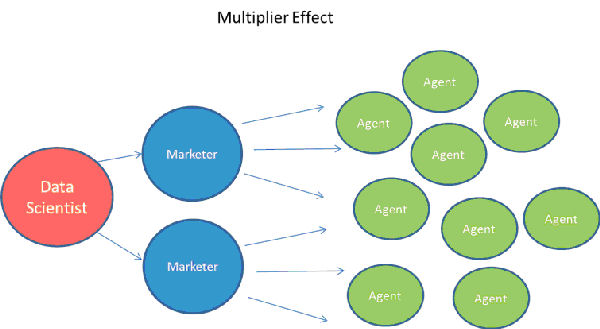One Way to Bring Advanced Analytics to the Masses
How deploying a multiplier effect model can help spread analytics throughout your organization.
- By Fern Halper, Ph.D.
- August 6, 2013
Much has been written lately about democratizing analytics and making analytics available to a wider range of users. Many organizations are already using or are planning to use advanced analytics. For example, over 50 percent of respondents in a 2012 TDWI survey stated that they were already using predictive analytics. In discussions I've had with companies, the trend is that organizations expect that business analysts and business users with knowledge of the business will be users of these advanced analytics technologies.
What does this really mean? Does it mean that these users will be hands-on users of advanced analytics tools and technologies? Will they be creating models?
Vendors are certainly trying to make their software easier to use. They are providing wizards and other tools to guide or even suggest specific models to users. Yet, a lot goes into building a predictive model, including getting the data in shape for modeling as well as determining what variables make sense to actually use in a predictive model. We'd be kidding ourselves if we thought that there is no training required for complex modeling. The reality is that expertise is involved.
Another method used by some vendors to make advanced analytics available to greater numbers of users is to deploy a multiplier effect model. For instance, say your company is interested in providing the next best offer (i.e., the use of predictive analysis to determine products or services that customers are likely to respond to) to its customers. Marketers might want to develop campaigns for these products and call center agents might utilize the results when speaking with customers.
One way to do this is to include three participants in this scenario: the data scientist, the marketer, and the call center agent. In this approach, the data scientist is the person who is responsible for dealing with data issues related to feeding models that can be used by the marketer. The data scientist decides what the input and target variables (i.e., the outcome of interest such as fraud or churn or positive response to an offer) might be -- for instance, variables used to train a predictive model. The data scientists are essentially determining what "can be modeled" by the marketer. They might also be constructing derived variable or other variables that might be useful in predictive models.

The marketer then uses a software package geared to this approach to develop models. Theoretically, they can't get into too much trouble because the data has already been determined for them. They can experiment and explore various models that have, in essence, been approved by the data scientist. In some ways, this is analogous to OLAP
BI for more advanced modeling. Using this approach, marketers can create numerous models themselves and are not dependent on a day-to-day basis for a statistician/data scientist to build a model for them. It can make marketers and the organization more agile.
The marketing analyst can even pass certain models off to a business administrator who can operationalize the model for a call center. The call center agent uses the complex model output without necessarily knowing that there is a model working behind the scenes. All the call center agent might see is the next best offer to suggest to a customer they have on the line.

The result is that a predictive model is taken to a wider set of end users in a one-to-many-to-many kind of multiplier effect.
The marketer still needs to know something about data and analytics to defend his or her analysis. However, this multiplier effect is one way to bring advanced analytics to the masses.
To learn more about the evolution of the agile enterprise, I encourage you to attend the TDWI World Conference in San Diego on August 18-23, 2013.